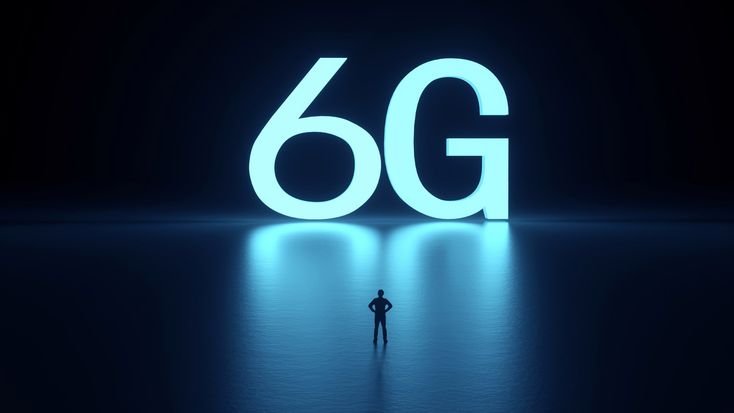Introduction
Just when we were getting used to the buzz around 5G, here comes the talk of 6G. You might be thinking, “Wait… we haven’t even fully rolled out 5G yet, and now it’s already 6G?” Same here.
But the truth is, tech never sits still. 6G isn’t just “faster internet”—it’s being imagined as the tech backbone for things that don’t even feel possible yet. We’re talking holograms, mind-bending speeds, and AI-driven everything.
Let’s take a closer look at what 6G might really mean.
What Exactly Is 6G?
Quick recap of the generations:
1G (1980s): Voice calls. Basic but groundbreaking.
2G (1990s): Text messages. The SMS era.
3G (2000s): Internet on phones. Emails, web browsing.
4G (2010s): Streaming, social media, mobile gaming—our current comfort zone.
5G (2020s): Ultra-fast, ultra-reliable, and connects millions of devices.
6G (coming ~2030): Even faster (think terabit speeds), nearly zero lag, and intelligent networks powered by AI.
A Quick Origin Story
2020–2025: Researchers in Japan, South Korea, China, Europe, and the US start shaping early concepts of 6G.
2028-ish: We might see experimental rollouts and pilot projects.
2030 onward: Commercial use could begin, at least in advanced economies.
I still remember reading about test labs claiming speeds so fast that a full season of a Netflix show could download in seconds. Honestly, it felt more like science fiction than a network upgrade.
How 6G Works (No Geek Speak, Promise)
Here’s the simplified version:
1. Terahertz Spectrum: 6G will use even higher frequencies than 5G, unlocking massive data capacity.
2. Smarter AI Networks: Built-in AI to manage, optimize, and even fix networks in real time.
3. Ultra-Low Latency: We’re talking microseconds of delay—basically, instant responses.
4. 3D Connectivity: Not just connecting people on the ground, but satellites, drones, and space-based networks too.
So yeah, whether it’s holographic calls or remote robotics, it’ll feel as close to “instant” as tech can get.
Why People Are Excited About 6G
Unreal Speeds: Possibly 100x faster than 5G.
Holograms & Extended Reality: Forget video calls—think life-size hologram meetings.
Smart Cities & Industry 5.0: Self-operating factories, AI-managed traffic, ultra-efficient logistics.
Healthcare: Real-time remote surgery, advanced monitoring, maybe even brain–machine interfaces.
Global Coverage: With satellite integration, 6G could reach places current networks miss.
It’s the kind of stuff that feels ripped straight from a sci-fi movie.
The Challenges (Because Nothing’s Perfect)
Infrastructure: Even more antennas and satellites than 5G—big cost, big build.
Energy Demand: All that power-hungry tech has environmental implications.
Security & Privacy: If 5G raised eyebrows, 6G will raise entire foreheads.
Accessibility: Developing countries might face long delays before 6G arrives.
Still a Dream: Much of it is still in labs, not reality.
Popular 6G Use Cases (What It Could Do Someday)
Immersive Holographic Calls: Imagine talking to someone who appears life-size in your living room.
Brain–Computer Interfaces: Controlling devices with your thoughts (yes, researchers are working on it).
Metaverse & Beyond: Truly seamless virtual worlds without the lag.
Autonomous Everything: Cars, planes, drones, robots—all communicating instantly.
Global Internet Access: Satellites providing ultra-fast internet in remote areas.
The Future of 6G
Here’s the reality check: 6G is still a “work-in-progress dream.” But if it lives up to even half the hype, it could transform the way we live, work, and interact with technology.
Experts say we might see the first real-world 6G use around 2030.
Personally? I think 6G sounds amazing—but I’d be happier if my current 5G didn’t drop to 4G whenever I walk into my kitchen.
Quick FAQ
Q: When will 6G launch?
A: Around 2030, though trials may start a bit earlier.
Q: Do I need to worry about 6G now?
A: Nope. 5G is still rolling out. 6G is future talk.
Q: How much faster is 6G than 5G?
A: Potentially up to 100 times faster, with almost zero lag.
Q: Is it safe?
A: Current studies suggest no health risks. The bigger challenge is energy use and data privacy.
